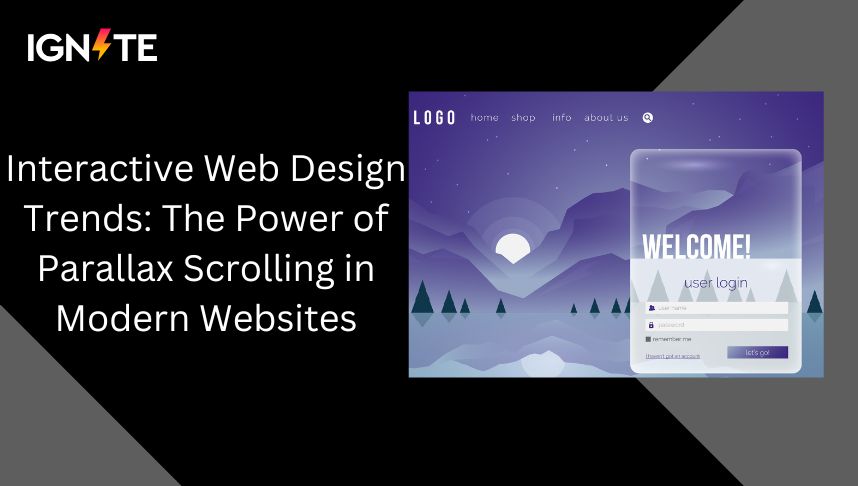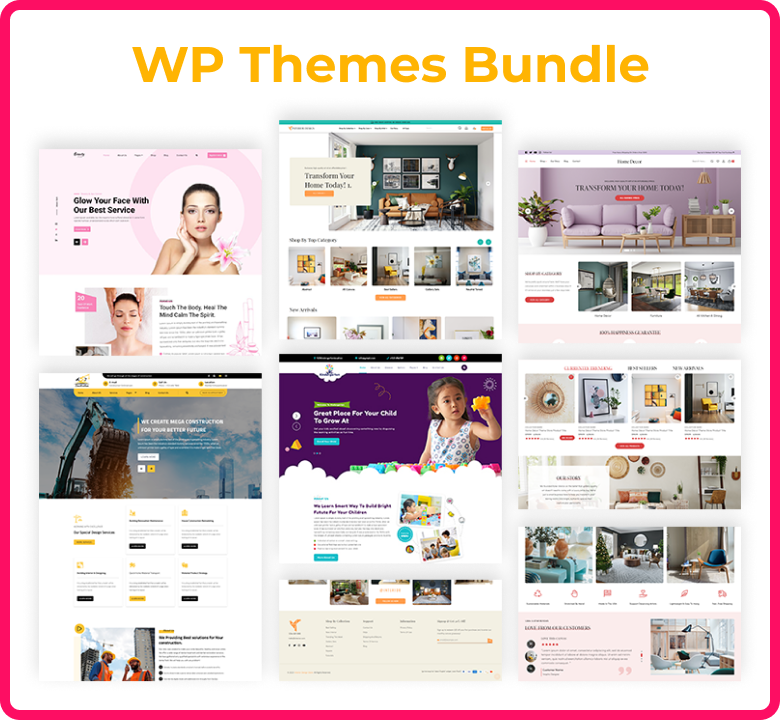
Parallax scrolling has become one of the most captivating web design techniques, offering users an engaging and interactive experience. This design approach creates an illusion of depth by making background elements move at a slower pace than the foreground, resulting in a visually dynamic and layered effect. When implemented effectively, parallax scrolling can enhance a website’s aesthetic appeal and encourage users to explore content more thoroughly. If you're looking for tools to elevate your web design, check out Theme Ignite for innovative solutions to create stunning, interactive websites with ease.
However, while the technique offers significant benefits, it also comes with challenges that web designers must navigate carefully. Poor implementation can lead to performance issues, detract from usability, and even frustrate visitors. In this blog, we’ll explore the best practices for incorporating parallax scrolling into your website seamlessly. Additionally, we’ll highlight common pitfalls to avoid, ensuring your design remains user-friendly, responsive, and optimized for performance. Whether you’re a novice or an experienced designer, this guide will help you master parallax scrolling.
How Parallax Scrolling Works: A Detailed Explanation
Parallax scrolling is a popular web design technique that creates an illusion of depth and motion by making background elements move at a slower pace than foreground elements as a user scrolls through a website. This technique draws inspiration from animation and video game design, where parallax effects are used to simulate 3D environments.
By using CSS, JavaScript, or a combination of both, designers can control the speed and direction of movement for different layers, creating a dynamic and engaging experience for users. This technique not only enhances visual appeal but also guides users’ focus through storytelling and interactive content. For tools and premium themes that make implementing parallax scrolling easier, explore the Premium Product Collection from Theme Ignite.
Whether you’re building a portfolio, an e-commerce site, or a storytelling platform, parallax scrolling offers endless creative possibilities to elevate your website’s design and functionality.
1. Layered Visual Elements
-
Websites implementing parallax scrolling are designed with multiple layers: background, middle, and foreground.
-
Each layer moves at a different speed, with background layers typically moving the slowest.
-
This movement creates a perception of depth, enhancing user engagement by offering a more immersive experience.
2. Scroll-Triggered Transformations
-
As users scroll through the page, JavaScript and CSS transform properties like translate, scale, or opacity to animate elements.
-
These effects are timed to create seamless transitions that respond dynamically to the scrolling behavior.
3. Use of JavaScript Libraries
-
JavaScript libraries such as GSAP (GreenSock Animation Platform) or ScrollMagic often power advanced parallax scrolling.
-
These tools allow designers to control the timing and speed of animations for better synchronization with user actions.
4. Impact on User Engagement
-
By combining movement and depth, parallax scrolling captivates users and encourages them to explore the website further.
-
This technique is particularly effective for storytelling, product showcases, or portfolio websites, where engaging visuals are essential.
5. Impact on Website Performance
-
Parallax scrolling can strain website performance if not optimized. Heavy use of animations, large images, or poorly written scripts may increase load times.
-
Best practices include compressing images, using lightweight libraries, and testing responsiveness across devices to ensure smooth performance.
Parallax scrolling works as a visually appealing tool that enhances user engagement while requiring mindful implementation to avoid compromising website performance.

Benefits of Implementing Parallax Scrolling
1. Enhances Visual Appeal
Parallax scrolling is a powerful web design technique that creates visually dynamic websites. By adding depth and motion, it transforms static pages into interactive experiences. The layered movement captivates visitors and makes the design more memorable, distinguishing your site from competitors. For storytelling, product displays, or portfolios, parallax scrolling leaves a lasting impression on users and reinforces your brand identity. To explore tools that can help you create stunning parallax designs, check out the WP Theme Bundle from Theme Ignite.
2. Boosts User Engagement
Parallax scrolling significantly enhances user engagement by creating an immersive browsing experience. The smooth transitions and animations encourage visitors to interact with the content and scroll further down the page. This keeps users on your site longer, reducing bounce rates and increasing the likelihood of conversions. For storytelling or promotional campaigns, parallax scrolling helps communicate messages more effectively, fostering a stronger connection with the audience.
3. Highlights Key Content
By employing parallax scrolling, designers can emphasize important sections or calls-to-action (CTAs). The motion and depth naturally draw users’ attention to specific elements, such as product features, testimonials, or subscription offers. This web design technique allows for strategic content placement, ensuring that users engage with the most critical aspects of your site. As a result, it improves the overall user journey and supports business goals.
4. Improves Brand Storytelling
Parallax scrolling elevates storytelling by combining visuals and interactive elements. The layered motion guides users through the narrative, creating a seamless flow of information. This approach is particularly effective for conveying brand stories, product journeys, or case studies. By offering an engaging storytelling experience, you build emotional connections with your audience, enhancing their trust in your brand and encouraging long-term loyalty.
5. Drives Conversion Rates
An engaging user experience powered by parallax scrolling can directly impact conversion rates. As users explore a visually appealing and interactive site, they are more likely to respond to CTAs, complete purchases, or sign up for services. This web design technique also supports product or service highlights, helping customers understand their value more effectively, ultimately boosting sales and customer satisfaction.
6. Differentiates Your Website
Parallax scrolling helps your site stand out in a crowded digital landscape. By showcasing innovative web design techniques, you position your brand as modern and forward-thinking. This uniqueness attracts users who value creativity and innovation, making them more likely to share your site or recommend it to others. A distinct and memorable design builds a competitive edge and enhances your overall online presence.
Challenges in Implementing Parallax Scrolling
1. Performance Issues
Parallax scrolling, while visually impressive, can significantly impact website performance. Complex animations, large images, and excessive use of scripts may lead to slow loading times. This can frustrate users, particularly those with slower internet connections, reducing user engagement and increasing bounce rates. To address this, designers must optimize images, minify scripts, and test performance across various devices and browsers.
2. Accessibility Concerns
Not all users experience parallax scrolling equally, especially those with visual impairments or motion sensitivity. The constant motion can cause discomfort for some users or make content harder to read. Without proper fallback options, such as accessible navigation and adjustable animations, this web design technique risks alienating a portion of the audience, ultimately undermining its purpose.
3. Mobile Compatibility Challenges
While parallax scrolling works well on desktops, it often struggles on mobile devices. Limited processing power, smaller screens, and touch-based interactions may result in laggy or broken animations. Ensuring compatibility through responsive design and lightweight implementations is crucial for maintaining user engagement on mobile platforms.
4. Increased Development Complexity
Implementing parallax scrolling requires advanced technical skills and knowledge of CSS, JavaScript, or animation libraries. Designers must carefully plan and execute these elements to ensure a cohesive user experience. Poorly executed web design techniques can lead to usability issues, detracting from the site's overall appeal and functionality.
5. Potential SEO Impact
Search engines prioritize speed and usability, both of which can be compromised by unoptimized parallax effects. Heavy scripts and slow load times can negatively affect search rankings. Additionally, if key content is embedded within animations, it may not be easily crawled by search engines, impacting visibility. Balancing creativity with SEO best practices is essential.
By addressing these challenges, parallax scrolling can enhance user engagement while maintaining accessibility and website performance.
Tips for Optimizing Parallax Scrolling Implementation
1. Optimize Image Sizes
Large background images are common in parallax scrolling, but they can slow down your website performance. Compress images using tools like TinyPNG or ImageOptim and leverage modern formats like WebP. Ensure images are responsive to maintain quality across devices without sacrificing speed.
2. Use Lightweight Code and Libraries
Minimize the use of heavy JavaScript libraries by opting for lightweight solutions like GSAP or ScrollMagic. Properly structure and organize your code to reduce load times. Combining and minifying CSS and JavaScript files further optimizes your web design techniques.
3. Prioritize Mobile Responsiveness
Since parallax scrolling can be resource-intensive on mobile devices, ensure your design is mobile-friendly. Consider simplifying effects or disabling parallax scrolling for smaller screens to improve user engagement and avoid frustrating users with laggy animations.
4. Implement Lazy Loading
Use lazy loading for images and animations to ensure only the visible content loads initially. This reduces initial load times and enhances website performance, especially for long-scroll pages.
5. Test Across Browsers and Devices
Thoroughly test your parallax effects on various browsers and devices to ensure consistent functionality. Tools like BrowserStack can help identify compatibility issues, allowing you to fine-tune your design for all users.
6. Provide Accessibility Options
Consider users with motion sensitivity by providing an option to disable animations. Use ARIA (Accessible Rich Internet Applications) roles and semantic HTML to make the content accessible to screen readers, ensuring parallax scrolling doesn’t hinder inclusivity.
7. Balance Effects with Content
While parallax scrolling can boost user engagement, excessive animations can overwhelm users and distract from key content. Use subtle, purposeful effects that enhance storytelling without compromising usability.
8. Optimize for Speed and SEO
Monitor your website performance using tools like Google PageSpeed Insights or GTmetrix. Optimize page speed by reducing HTTP requests, enabling browser caching, and utilizing Content Delivery Networks (CDNs). Ensure critical content is crawlable by search engines, even if embedded in animations.
By following these tips, you can create an engaging and visually appealing parallax scrolling experience while maintaining optimal performance and usability.
Conclusion

Parallax scrolling is a captivating web design technique that enhances user engagement by adding depth and motion to websites. When implemented effectively, it creates visually stunning and interactive experiences that captivate visitors and encourage them to explore further. However, as with any advanced design approach, it comes with challenges, including potential performance issues and accessibility concerns.
To leverage the benefits of parallax scrolling, designers must strike a balance between creativity and functionality. By optimizing images, using lightweight code, prioritizing mobile responsiveness, and adhering to accessibility standards, you can ensure that the technique enhances your website without compromising usability or performance. For expert guidance or support in implementing parallax scrolling, reach out to the team at Theme Ignite.
Ultimately, parallax scrolling is a tool that, when used thoughtfully, can elevate your website's appeal, strengthen storytelling, and drive user engagement. By understanding its best practices and avoiding common pitfalls, you can create a dynamic and user-friendly site that stands out in today’s competitive digital landscape.









